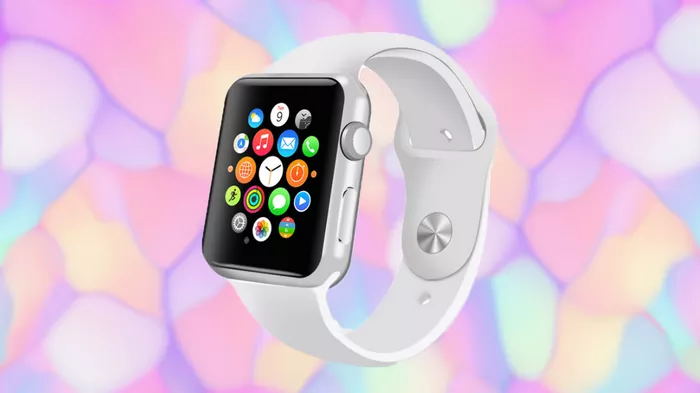As technology continues to evolve, so does the functionality of our smart devices. The Apple Watch, in particular, has witnessed significant advancements, including the integration of cellular connectivity. In this article, we explore the question that often arises: Does my Apple Watch need a SIM card? Delving into the intricacies of its connectivity features, we unravel the mystery surrounding the need for a traditional SIM card in the Apple Watch.
I. The Evolution of Cellular Connectivity in Apple Watch:
The introduction of cellular capabilities in Apple Watches marked a transformative shift, allowing users to stay connected even when their iPhones are out of reach. This enhancement eliminates the dependence on Wi-Fi or a paired iPhone for essential functions, offering a new level of independence to the device. However, the implementation of cellular connectivity in the Apple Watch comes with a distinctive twist – the absence of a traditional SIM card.
II. The eSIM Advantage: No Need for a Physical SIM Card:
Unlike traditional smartphones that require a physical SIM card to establish cellular connectivity, the Apple Watch adopts an embedded SIM, commonly known as an eSIM. This compact and integrated solution simplifies the activation process and eliminates the need for users to acquire a physical SIM card or go through the hassle of transferring a SIM from another device.
The eSIM in the Apple Watch is a virtual counterpart that is embedded within the device itself. This innovation streamlines the activation process and enhances the user experience, making cellular connectivity more accessible and user-friendly.
III. Setting Up Cellular Service: Seamless Integration with Your iPhone:
When you pair your Apple Watch to your iPhone, the process of setting up cellular service is seamlessly integrated into the setup routine. As you initiate the pairing process, you will be prompted to configure cellular service, and the device will guide you through a series of simple steps. This user-friendly approach ensures that even those unfamiliar with cellular setups can effortlessly enable this feature on their Apple Watch.
The integration of cellular service during the pairing process establishes a secure and efficient connection between your iPhone and Apple Watch. This connection enables your Apple Watch to leverage the cellular network for calls, messages, and data, providing an uninterrupted and cohesive experience.
IV. eSIM Activation: Simplifying Connectivity for Users:
The activation of the eSIM in the Apple Watch is a straightforward process. As you go through the setup, you may need to coordinate with your carrier to activate the cellular service for your Apple Watch. This often involves confirming your plan details and ensuring that your carrier supports the activation of eSIMs.
Once the eSIM is activated, your Apple Watch gains the ability to operate independently, leveraging cellular connectivity for various tasks. Whether you’re on a run, in a meeting, or simply away from your iPhone, the eSIM ensures that your Apple Watch remains a versatile and connected companion.
V. FAQs – Apple Watch and Cellular Connectivity:
1. Can I use cellular connectivity on my Apple Watch without pairing it with an iPhone?
No, cellular connectivity on the Apple Watch requires pairing with an iPhone during the initial setup. The iPhone serves as the primary device for configuring and managing cellular service on the Apple Watch. Once paired, the Apple Watch can operate independently using its eSIM for cellular connectivity.
2. Does the Apple Watch support traditional physical SIM cards?
No, the Apple Watch does not support traditional physical SIM cards. Instead, it utilizes an embedded SIM (eSIM) that is integrated directly into the device. This eSIM streamlines the activation process and eliminates the need for users to obtain or transfer a physical SIM card.
3. How do I activate cellular service on my Apple Watch with the eSIM?
During the pairing process with your iPhone, you will be prompted to set up cellular service on your Apple Watch. This involves coordinating with your carrier to activate the eSIM. You may need to confirm your plan details and ensure that your carrier supports the activation of eSIMs. Once activated, your Apple Watch can utilize cellular connectivity independently.
4. Can I switch carriers or plans for the cellular service on my Apple Watch?
Yes, you can switch carriers or plans for the cellular service on your Apple Watch. To do so, you would need to contact your desired carrier to initiate the process. Keep in mind that the availability of carriers and plan options may vary, so it’s advisable to check with your chosen carrier for specific details on switching cellular service for your Apple Watch.
5. Does the eSIM in the Apple Watch support international roaming?
The ability to use cellular service internationally on your Apple Watch depends on the carrier and the availability of international roaming options. Some carriers offer international roaming for the eSIM in the Apple Watch, allowing users to stay connected while traveling. It’s recommended to check with your carrier regarding international roaming options and associated fees.
6. Can I use my existing iPhone plan for the cellular service on my Apple Watch?
In many cases, carriers offer options to add an Apple Watch to an existing iPhone plan for a supplementary fee. This allows users to share the same phone number and plan between their iPhone and Apple Watch. Check with your carrier for details on adding your Apple Watch to your existing plan and any associated costs.
7. Is the eSIM in the Apple Watch secure for cellular transactions and data transmission?
Yes, the eSIM in the Apple Watch is designed to be secure for cellular transactions and data transmission. Apple employs industry-standard security measures to protect user data and ensure the privacy of communications over cellular networks. Additionally, the integration of the eSIM into the device enhances security by eliminating the risk associated with physical SIM card removal or tampering.

